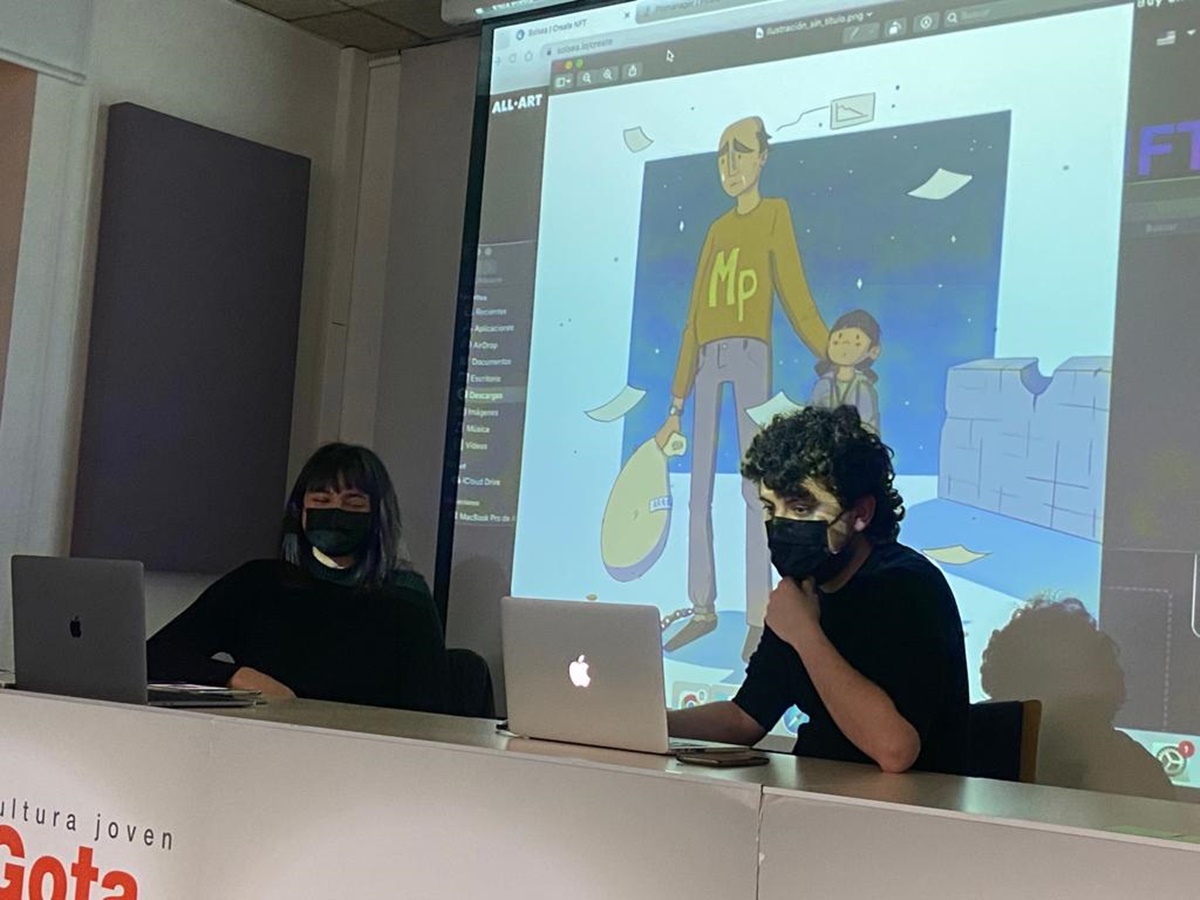Technology is advancing by leaps and bounds and the appearance of new terms in recent years is constant. Bitcoin, metaverse or blockchain are words that are beginning to sound strong. NFTs (Non-Fungible Tokens) are another buzzword. To try to bring this world closer to the youngest; Aitor Prado, Aitor Mora and Alba Álvarez, based in La Rioja, starred in the talk ‘Understanding NFTs’ in Gota de Leche in Logroño. A field full of opportunities is open for young people from La Rioja.
What are NFTs? Well, they are unique and impossible to reproduce copies of objects (tangible or intangible) that we already know in real life. Based on blockchain technology (chain of blocks) and applying special instructions (smart contracts), its authenticity and originality are ensured. Its applications have many aspects: digital art, video games, the textile sector, traditional sports, music or the metaverse (the latter, with La Rioja for sale on Next Earth).
Life opportunity for digital creators
The volume of business in this sector is not exactly small: more than 17,000 million dollars in 2021, with a 21,000% increase compared to 2020. It is true that a good part of this market has a speculative spirit and its price rises due to collecting intentions, of status or of generating ‘virtual tribes’ that use them. However, NFTs will also open the door for digital artists to better control their work and collect royalties (digital rights for using a product). In short, make a living from your profession.
This is what Alba Álvarez, a graphic designer and conceptual artist based in Logroño, tries to do. She made a digital drawing (‘Thirteen’) during the talk, later converted into NFT ; while the jurists Prado and Mora were in charge of the theoretical part. “Each of the attendees has chosen a word at random and combining all of them, I have managed to make a drawing,” explains Alba.
On her website, Alba has numerous works, such as the computer game Nébula or the animated short Aittitta Makurra, board games or 2D/3D works: « NFTs are positive, because they give you greater control over your work and about the path that it will have when someone buys it: you control that it is not pirated, that illegal copies are not made or that nobody takes a screenshot to post it on the Internet and that they take remuneration with something that is not theirs ».
How are these works uploaded to the network? Well, through marketplaces (digital markets). With cryptocurrencies as a means of payment (ethereum, solana), platforms such as OpenSea, Rarible, SuperRare or Alcor act with gigantic places for the sale of these digital products. In this way, many risks associated with digital are reduced, which Álvarez limits: “The worst thing is that it gets pirated, that your work is on the Internet without you knowing it, and that someone earns more money than you are earning.”
Aitor Prado shares this optimism and redoubles his bet for the medium term: «In the future, I think the metaverse is going to be the showcase for everything that is generated in the art world. If we are at home and want to see a work by Banksy, we can see it. This will bring art even closer to homes. If with Netflix it was already close, with this it will be even closer. Prado believes that this technology is already “touching all young people” and that it will reach them if it is explained in a simple way and with “examples that they live in their day to day”.
beyond art
But NFTs are not only limited to art, but can be applied to many more sectors: «It is applied to collecting, the metaverse, or creating virtual fashion collections, as several clothing brands have done. They also use it in everything that is cinema, art, 3D art, illustration, music and the entire video game sector, where a lot of money is being generated and they even pay you to play.”
A teenager may be reading this article, interested in this world and want to start. Mora encourages them: “Although the technology behind it is complex, you normally don’t know what a TCP/IP protocol is, and yet you can use a web page. You can easily start without having much knowledge, since there is already a lot of information on the Internet.”
Finally, in addition to its utilities; It is important to highlight the extensive regulation that NFTs entail. And therefore, the budding opportunity for lawyers, judges and legal specialists. As explained at the conference, managing intellectual property and dealing with the different forms of registering the work (copyright, patents, trademarks, industrial designs…) will not be that easy either.
In short, NFTs are a virtual revolution waiting to be exploited in different fields. Take the opportunity and ride the wave!

